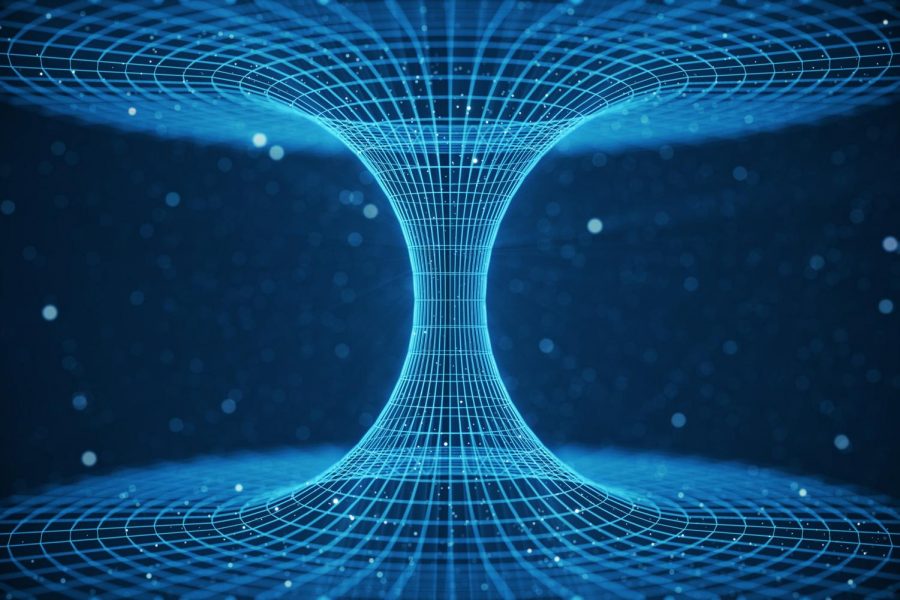Bermuda Triangle = Wormhole?
“A star is so massive that it gravitationally crushes itself to the point that its atoms fuse together. Throwing water on the sun would simply increase the sun’s mass, which would increase its gravity. This stronger gravity would crush the sun, even more, leading to more nuclear fusion” (Baird 2015). The ocean can not only increase the mass of a Blackhole, but it could potentially sustain it.
March 6, 2020
On March 3rd, 1915, the National Advisory Committee for Aeronautics (NACA) began their aeronautical research for military and civilian aviation. Superseding NACA, The National Aeronautics and Space Administration commonly known today as NASA advanced their research in their quest for the final frontier; Space. Throughout history, the Human Race had been looking up at the stars when they should have been looking down at the ocean. According to History.com, “When Christopher Columbus sailed through the area on his first voyage to the New World, he reported that a great flame of fire (probably a meteor) crashed into the sea one night and that a strange light appeared in the distance a few weeks later. He also wrote about erratic compass readings, perhaps because at that time a sliver of the Bermuda Triangle was one of the few places on Earth where true north and magnetic north lined up.” On Christopher Columbus’ voyage to the new world, he became one of the first witnesses to a global phenomenon commonly known as The Devils Triangle or The Bermuda Triangle. John Wenz, an author for the Scientific American, wrote the article titled, “A Nearby Neutron Star Collision Could Cause Calamity on Earth.” Informing the public of a catastrophic event happening a few light-years away, “After billions of years spent slowly circling each other, in their last moments the two degenerate stars spiraled around each other thousands of times before finally smashing together at a significant fraction of light-speed, likely creating a black hole. The merger was so violent it shook the universe, emitting some 200 million suns’ worth of energy as perturbations in the fabric of spacetime called gravitational waves. Those waves propagated out from the merger like ripples on a pond, eventually washing over Earth” (Wenz 2017). The death of a star usually creates singularities across the infinite universe. Black holes are common, yet we still know very little about the topic. Also, Albert Einstein’s theory of relativity dove into these undetectable gravitational ripples caused by collisions. The Institute of Physics added, “The explosion also disperses the different elements across the universe, scattering the stardust which now makes up planets including Earth” (IOP). Everything on planet earth is made up of stardust, including us. It is not far off to claim that fragments of stars are still alive within our planet. Characteristics of Black holes are even showing up in the form of eddies, “Some of the largest ocean eddies in the world are mathematically equivalent to the mysterious black holes of space” (Zolfagharifard 2013). Black holes absorb light and matter. whereas, White holes emit light and matter. This process is recognized as a Wormhole. The term Eddies refers to the circular vortex in the ocean representing a Blackhole. Water acts as fuel for a star and causes it to increase in mass and gravity, “A star is so massive that it gravitationally crushes itself to the point that its atoms fuse together. Throwing water on the sun would simply increase the sun’s mass, which would increase its gravity. This stronger gravity would crush the sun, even more, leading to more nuclear fusion” (Baird 2015). The ocean can not only increase the mass of a Blackhole, but it could potentially sustain it, “The fusion and production of heavy elements continue until iron starts to form. At this point, fusion stops and the iron atoms start to absorb energy. This energy is eventually released in a powerful explosion called a supernova” (Newman). A Wormhole on earth could mean so many possibilities for the Human Race. However, many questions arise. If we can enter a Blackhole, could we survive spaghettification? If we can survive spaghettification, than where would the Wormhole take us? What effects would the Whitehole have on our bodies? Curious does kill the cat, “If you had a black hole the size of our solar system, then the tidal forces at the event horizon … are not quite that strong. So you could actually maintain your structural integrity” (Wolchover 2012). It is very possible to survive a Blackhole. However, bending space-time has been proven to be unpredictable. The mystery of The Bermuda Triangle has to lead me to wonder, is it a passage into deep space? A Wormhole.












Alex Zastre • May 16, 2021 at 12:13 PM
Very good article 12/10
.com • Apr 20, 2021 at 12:52 PM
This Helped me in school.
. • Oct 7, 2020 at 12:07 PM
Omg thank you so much this helped me in school!
tom marvolo riddle • Jul 3, 2020 at 7:51 AM
i wish the bermuda triangle was a wormhole to another earth….. it wou’ be soo cool.
even dumbeldore might make a new hogwarts there . and i would kill him.
adviser • Aug 26, 2020 at 10:48 PM
We love creativity!